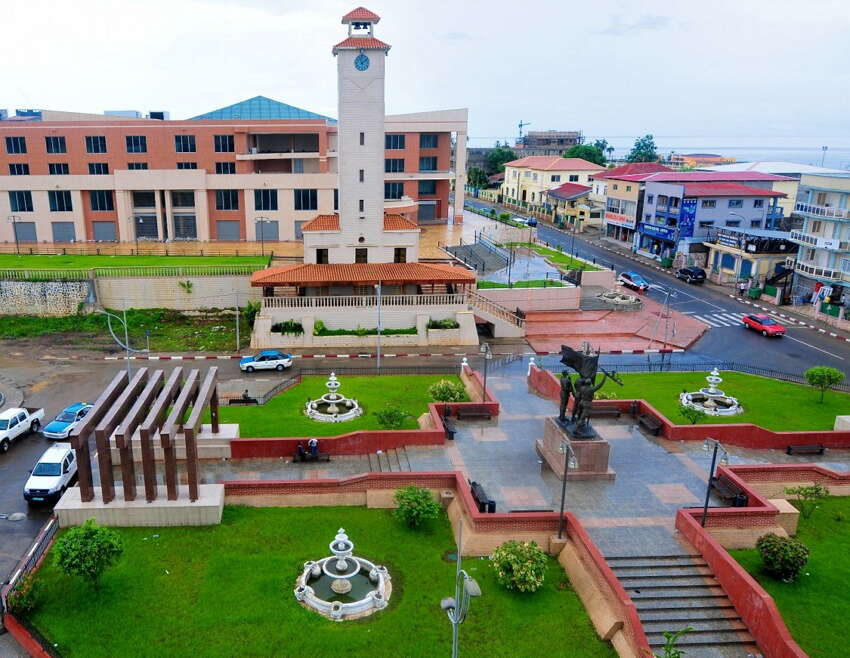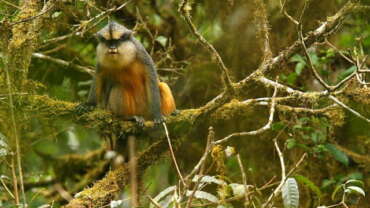Experiences in Equatorial Guinea
COLONIAL MALABO
Departure to visit the city of Malabo on which we will visit the old part of the city: the Independence Square, the Cathedral, the Green House, the National Library, the Slave Route, Guinean Culture Centre,…Walk by the Central Market for enjoying its colorful and hustle, then we’ll visit the Spanish and French Cultural Center.
MODERN MALABO
We will move to the new Sipopo area and the new part of the town, called Malabo II. In Sipopo area we’ll walk by an small Island called Horacio from a woden bridge that’s 500m length, then we’ll end our tour in the Malabo National Park.
BASILE PEAK
Visiting Pico Basilé that is 3018 meters high but we’ll arrive just up to Bisila Church that is 2.800 meters high.
BIOKO LOOP
We travel to Bioko Sur, the protected jungle area which covers the southern portion of the island. First we head for Moka via the town of Riaba crossing the impressive Puente Cope bridge along the way. In Moka we’ll visit the village and the nature research centre and learn about the work of the Bioko Biodiversity Protection Program. Moka is the nerve center of the Bubi culture. Moka gets its name from a king who ruled the island in the nineteenth century and resided in Riaba. Then we’ll return to Malabo via the village of Batete, called Maria Cristina by the Spaniards. It is situated in the upper part of the southern massif. Its main attraction is a church that dominates the region and is among the rare religious buildings in the world built in wood.
During the walk through the village we will see different drying cocoa. Then we’ll visit the town of Luba on the west coast, a picturesque port town that played an important role in the colonial history of this nation. It was here in 1778 that the Spanish first landed, Count of Arjelejos, and laid claim to the island (a monument commemorates this date at the northern end of town).
BIAO LAKE
Located on the great volcanic mountain, south of the island of Bioko. Moka, small village, was named after a king who reigned in the nineteenth century and resided in Riaba. Moka Lake or Biao Lake is located in an ancient crater, served as a sanctuary to the high priest of the Bubis. Upon arrival to Moka we will hike to Biao Lake, during the trek and if we are lucky, we may see some different species of primates that exist in the Lake area. On arrival to the lake, time to enjoy its beauty. The trekking is a excursion through the woods with a combination of plains, ferns and trees. The more adventuous can walk from the crater to the edge of the lake.
ILADYI WATERFALLS
Located on the heights of the great volcanic mountain in the south of the island of Bioko, the small village of Moka gets its name from a king who reigned in the nineteenth century. Ilachi waterfalls is one of the most spectacular attractions of the island of Bioko, where separated branches from Ilachi river fall from about 250 meters by the edge of the canyon. Trekking through the forest and plains until you reach the waterfalls. During the hike there is a hundred meters in the form of a slope. There is also a creek where water can reach the knees.
UREKA BEACHES
San Antonio of Ureka, also know as Ureka, is a village in the southern province of Bioko. We’ll be able to enjoy the wild nature of the country that here offers an spectacle of beauty with its beaches, waterfalls and rivers.
BATA CITY TOUR
Coming from the airport the first notebuilding is the sprawling oceanfront presidential complex, next you will pass the bright-white Nuevo Ayuntamiento (Town Hall). Then we’ll pass the UNGE University Campus, where the Public Library can be found. To the west is Bata Cathedral. Continuing back towards the well-landscaped Paseo Marítimo, you’ll note the Torre de la Libertad (Tower of Freedom).Slightly further south but still facing the ocean is the Spanish Cultural Centre and close to it is the French Cultural Centre. Then we’ll reach The Estadio La Libertad and continuing northeast we’ll see the Plaza del Reloj. Just over the road is an obelisk monument to Pope John Paul II, commemorating his visit in 1982.
RIO CAMPO
We travel to the northern part of Equatorial Guinea. We’ll visit Rio campo Reserve and our highlights are: Old Punta Mbonda lighthouse, Tika Beaches, Tika eco-museum and Rio Campo Village.
MBINI ETEMBUE COGO
We travel to Mbini, is located at the mouth of Benito River. The river landscape here is dominated by the Chinese-built suspension bridge which stretches 800m over the river, linking the southern portion of the coastline to Bata. The bridge is a sight to behold, especially at night when it is often lit up, but be careful taking photographs as bridges are designated ‘strategic sites’.
From Mbini we drive to Etembue where we can visit the remains of an old Spanish logging operation.
Then we drive to Cogo, is located at the mouth of the Muni River, surrounded by the Reserva Natural del Estuario del Rio Muni. The government hopes to make Cogo a commercial and tourism hub in the area and it is expanding rapidly. The redevelopment of the waterfront is already underway and it is clear that the walkway by the town’s market is intended to a smaller version of the Paseo Maritimo in Bata. On a clear day you can see all the way across the river to Gabon.
OYALA CITY
We travel to Oyala, the next Capital of Equatorial Guinea, a city of new creation located deep in the jungle.
BASILICA OF MONGOMO
The Basilica of the Immaculate Conception is a Roman Catholic basilica. The Basilica of Mongomo is currently the largest religious building in Central Africa and the second largest Catholic church throughout Africa, after the Basilica of Our Lady of Peace in Ivory Coast.
The basilica was begun in 2006, being consecrated on December 7, 2011 by Nigerian Cardinal Francis Arinze on behalf of Pope Benedict XVI. The basilica has a capacity to accommodate thousand faithful and as the name suggests is dedicated to the Immaculate Conception, patroness of Equatorial Guinea. Inside the basilica a replica of the Esperanza Macarena venerates, which was brought from Seville, Spain.




